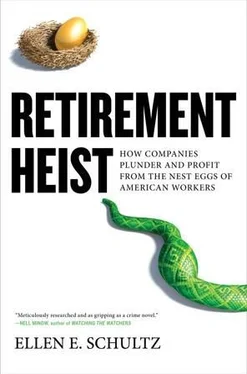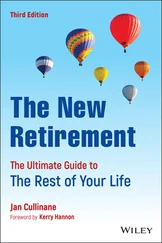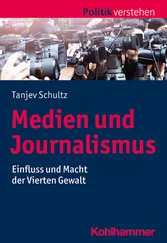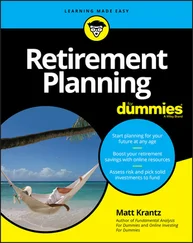Like most public pensions, executive pensions are calculated by multiplying years of service and pay—the formula many private employers have abandoned for regular employees because the benefits grow steeply in the final years. With pensions based on final pay, an individual has a big incentive to make sure the final pay is as high as possible. A firefighter or police officer, for example, might work hundreds of hours in overtime in their final years on the job, a move that might add $50,000 a year to a pension.
Executives do essentially the same thing, with bigger payoffs, and have a variety of ways to boost their pay—and thus their pensions—by millions of dollars prior to departure or retirement. One way is to simply change the definition of “pay” to include more types of compensation. ConocoPhillips included “certain incentive payments” when it totted up CEO Jim Mulva’s pension in 2008, which increased it by $9.5 million and brought it to a total of $68 million. The same year, a $6 million pay increase for Merck’s chief executive, Richard T. Clark, pushed his pension from $11.9 million to $21.7 million.
Awarding a substantial bonus to executives who are on the verge of retirement or departure can also generate a huge pension windfall. One of ExxonMobil’s two supplemental pension plans for executives calculates executive pension benefits using the three highest bonuses in the five years prior to retirement. A well-timed bonus can make a big difference. A $4 million bonus to CEO Rex Tillerson in 2008 pushed the total value of his pension up by $8 million in a single year, to $31 million. “By limiting bonuses to those granted in the five years prior to retirement,” the company states blandly in its proxy filing with federal regulators, “there is a strong motivation for executives to continue to perform at a high level.” It also encourages top management to make some shortsighted decisions, because a large award can lead to bigger pension benefits for the rest of their lives.
Awarding additional years of service, a practice that compensation watchdogs have perennially snapped at, is alive and well. PG&E, the giant West Coast utility, awarded its CEO, Peter Darbee, an additional five years, which boosted his pension 38 percent to $5.2 million in 2008. The company said it was doing this because it felt that his pension was less generous than what other executives were receiving. This kind of peer pressure drives executive pay and pensions steadily higher. That same year, the compensation committee of Constellation Energy awarded its chairman and CEO, Mayo Shattuck, an additional 2.5 years of service, boosting his pension by $10.3 million, a 97 percent increase.
Executive pensions have another characteristic that has been widely criticized in public pensions: Employers have an incentive to boost the benefits and hide the growing (unfunded) liability. In contrast, when it comes to rank-and-file pensions, employers have an incentive to inflate the liabilities and cut benefits.
Using unrealistic (and sometimes undisclosed) assumptions to estimate the executive liability can shrink it substantially. Some companies assume that executive salaries don’t rise; others, like Towers Watson, calculate the executive obligation using an unusually high discount rate, 7.5 percent in 2010, which results in a lower reported liability.
Companies can delay reporting some of the liability by waiting until the executive is headed out the door to apply some feature that inflates the total payout. A small change in the interest rate used to calculate a lump sum payout, for example, can increase a pension by millions of dollars.
In 2008, Goodyear Tire & Rubber adjusted the interest rate and compensation assumptions it used to calculate top executives’ pensions, which increased chief executive Robert Keegan’s pension by $6.3 million, to a total of $17.5 million. (The company earlier credited him with eighteen additional years of service, which has boosted his pension by $10.5 million.) At the end of that same year, Goodyear froze salaried employees’ pensions, saying its obligations under the plans were so onerous that they “could impair our ability to achieve or sustain future profitability.”
Joel Gemunder, the CEO of Omnicare, a provider of pharmaceutical care for nursing homes, had amassed retirement benefits worth roughly $91 million by the time he retired at age seventy-one in 2010. As lofty as that figure was, it got even bigger when he left. His retirement triggered immediate vesting for his stock options and restricted shares, which were worth more than $21 million, and he received $16.2 million in cash as a severance payment. Small perks included payments for tax and financial planning ($134,250) and “executive bookkeeping services” ($27,500). Altogether, the total retirement payout was more than $130 million. And ordinary Omnicare workers? Their pensions were frozen years ago, and in 2009 the company imposed salary cuts even as it reported record profits.
The pension and deferred-comp tables included in annual proxy statements provide a limited snapshot of the value of a top manager’s benefits. But these amounts aren’t what the person is likely to receive. Those numbers are tucked away lower down, under various provisions, such as “voluntary retirement” or “disability.” If someone relied on the pension table in Wells Fargo’s proxy statement, they might conclude that president John Stumpf’s pension in 2008 was $9.6 million, a 3 percent decline from the prior year. But elsewhere, the filing notes that the value of the pension he would receive if he left spiked to $17.7 million from $11.2 million—a 58 percent increase.
The biggest trigger of a huge pension boost can be a change in control. Scott Ford, president and chief executive of Alltel Corp., had accumulated a pension of $16.8 million through 2007. But after the company was acquired by Verizon, change-in-control provisions tripled Ford’s salary and awarded three additional years of service. He left the company in 2008 with a pension payment of $51.7 million. Altogether, the five departing top executives received pension payouts of $131 million.
Despite their limitations, the executive pension tables in the proxy are better than nothing. In the S&P 500, 160 companies don’t have the kinds of retirement benefits that they are required to disclose in the proxies’ pension tables. This doesn’t mean that those executives receive no retirement benefits, just that the companies characterize the benefits as something other than a pension, so the benefits don’t fall under the enhanced SEC disclosure rules that companies were required to adopt in 2007. These require companies to place an overall value on their executives’ pension benefits.
Omnicom, for example, established a Senior Executive Restricted Covenant & Retention Plan in 2006 to provide top executives at the global advertising giant with an annual payment, based on salary and years of service, for fifteen years after they depart. John Wren, the company’s chief executive, will receive $1.3 million a year for fifteen years. The retirement payments will grow with a cost-of-living adjustment, a feature that most companies have discontinued in the pensions for regular employees. The liability for this? Anyone’s guess.
Some companies even give the impression that they’ve cut executive retirement benefits. Companies that freeze their regular pension plans sometimes freeze their executive pensions, too, especially when the plan is a so-called makeup, or excess, plan that mirrors the regular 401(k) but allows greater deferrals. But companies may take steps to soften or eliminate the impact. State Street Corp. froze its executive pensions effective January 1, 2008, but awarded executives “transition” benefits that postponed the freeze for two years. Thanks to this feature, and a drop in interest rates and other factors, their pensions rose 47 percent in 2008, and CEO Ronald Logue’s pensions (like most top executives, he has more than one) rose by $7.8 million to $25.3 million. The company also added a retirement savings component to the plan and will contribute $400,000 a year in cash and stock to each executive’s account.
Читать дальше












